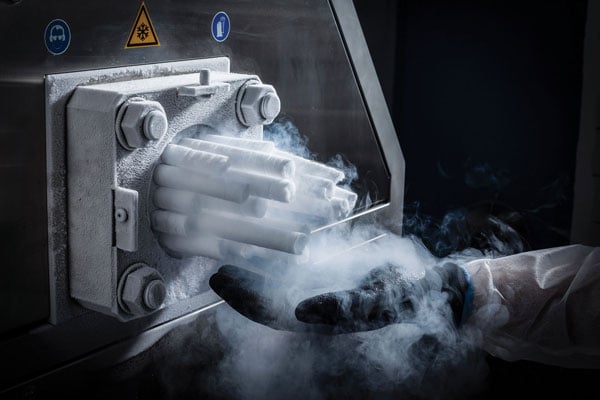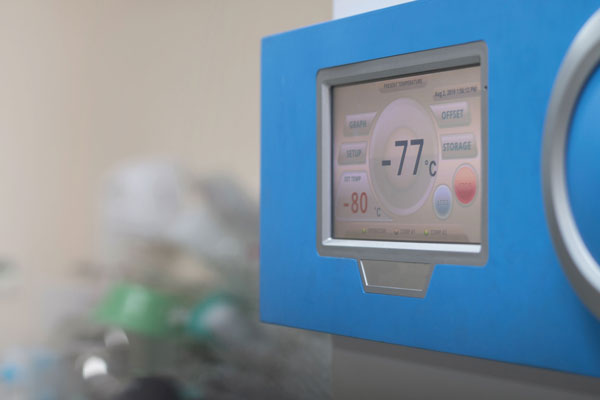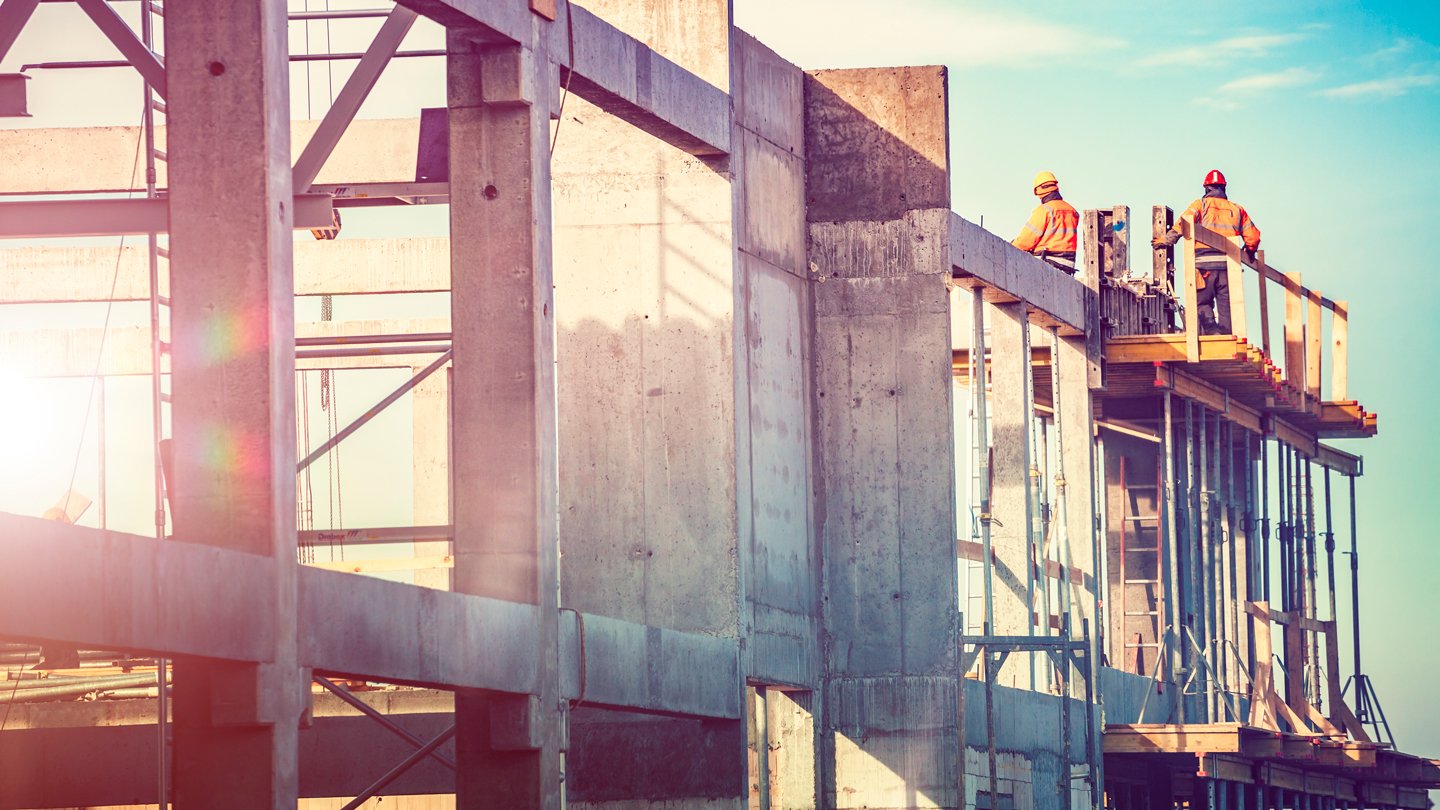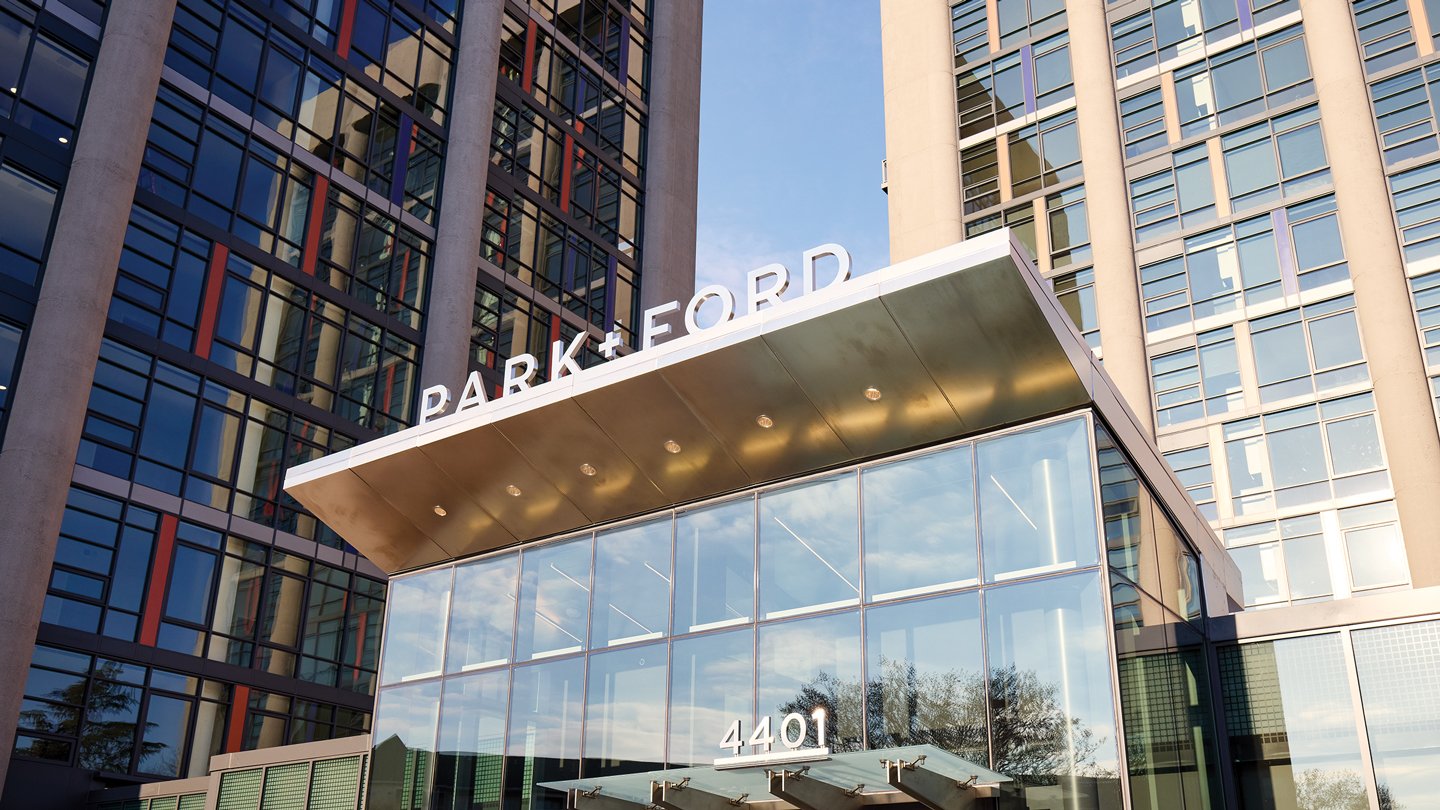The Vaccines are Here. What Happens Next?

The rollout of immunizations to defeat COVID-19 has enormous implications for the commercial real estate industry.
In late 2020, the U.S. and other countries began distributing vaccines to control the COVID-19 pandemic. It is the single most important development in the year-long fight against the disease, which has killed and sickened millions around the world and crippled the global economy.
The stakes are high. The vaccines will not only save lives and boost the morale of hundreds of millions who have been forced to live constrained lives due to lockdowns and other public health measures; experts say they are also the most important factor in the overall economic recovery from the pandemic. The commercial real estate industry has been hit hard by the pandemic, particularly the retail, office and lodging sectors.
“If we get 70% to 85% of the country vaccinated by the end of the summer, I believe by the time we get to the fall, we will be approaching a degree of normality,” Dr. Anthony Fauci, the chief medical advisor to President Biden, said in late January. “It’s not going to be perfectly normal, but one that I think will take a lot of pressure off the American public.”
The release of the vaccines also comes as new, more contagious variants of the disease began to spread rapidly across the globe, threatening to derail a fragile economic recovery that began over the summer as the first wave of the pandemic subsided. For example, the U.S. economy was expected to add 50,000 jobs in December 2020. Instead, it lost 140,000 jobs, according to the U.S. Department of Labor.
“The first quarter of the year, while being extremely promising on the vaccine rollout, is shaping up to be far harder than many maybe anticipated, exacerbated greatly by the new highly contagious variants,” Oanda senior market analyst Craig Erlam told Forbes in January.
While the vaccines against COVID-19 are generating optimism among economic forecasters (see story below), there still remains the issue of getting shots into the arms of more than 300 million Americans in a timely fashion.
“In 2011, nearly 490 million people around the world received the flu vaccine,” said Travis McCready, executive director of JLL’s U.S. Life Sciences Markets, who was quoted in a December 2020 article from JLL. “We’re looking at billions of doses of the coronavirus vaccine in the U.S. alone. How do you actually start to build supply chain infrastructure for a product that has never existed before?”
Larry St. Onge, DHL’s president of life sciences and health care, told CNBC in December 2020 that distributing the vaccines — some of which require storage at ultra-low temperatures — will be the largest global logistics effort since World War II.
“The biggest challenge in the whole thing is really around that final mile,” he said. “Realistically, there will be some product that will get lost or potentially doesn’t arrive at the right temperature.”
Vaccine Distribution and the Cold Chain
In January, President Biden unveiled his “National Strategy for the COVID-19 Response and Pandemic Preparedness.” It is an expansion of the Trump administration’s Operation Warp Speed. A critical component of Biden’s 200-page plan is mounting a “safe, effective, comprehensive vaccination campaign” with a goal of vaccinating 100 million Americans in 100 days. (As of March, that goal was being exceeded, with an average of 2.1 million people receiving vaccines each day, according to NPR.) Biden’s $1.9 trillion plan for fighting COVID-19 and boosting the economy includes $160 billion for vaccination and testing programs.

Delivering vaccines to more than 300 million Americans will be the biggest global logistics effort since World War II, Larry St. Onge, DHL’s president of life sciences and health care, told CNBC in December 2020. Getty Images
The program faced criticism for a slow roll-out in the early days, but performance has improved as more vaccines have been produced.
“As we operationalize the program, it’s going to speed up,” Dr. LitJen Tan, chief strategy officer for the Immunization Action Coalition, told Politifact in January. “We vaccinate about 150 million people against the flu every year in two and a half months, so the capacity to vaccinate a lot of people is there. Flu vaccines aren’t like the COVID-19 vaccines, so we won’t reach that number, but we can get pretty darn close.”
The first COVID-19 vaccines delivered to the U.S. in late 2020 are from Pfizer and Moderna. Because both must be stored at very low temperatures, cold chain logistics will play a critical role in the distribution of the vaccines.
Pfizer’s vaccine must be kept at –80 degrees Fahrenheit. It can be stored in a refrigerator for up to five days before being administered. Moderna’s vaccine must be kept at –4 degrees Fahrenheit for shipping and long-term storage. It can be thawed and kept in a refrigerator between 36 to 46 degrees Fahrenheit for up to 30 days prior to use. Both Pfizer and Moderna vaccines require two shots spaced apart by several weeks.
According to Matt Hirsch, the president of Primus Builders, a firm that specializes in the design and construction of cold storage facilities, the logistics of distributing COVID-19 vaccines are significantly more complicated than those for flu shots.
“The thing that’s been different about this pandemic and Operation Warp Speed was the fact that each year, there’s an annual build-up of inventory to meet the flu season,” he said during a recent NAIOP webinar. “This was a pandemic that hit us immediately. It required vaccination on a global scale that was really outside of the normal cycles for vaccination, as well as the temperature and storage requirements.
Hirsch said the highest levels of government consulted the cold-storage industry to understand what distribution channels were available in the U.S. for vaccines that require ultra-cold temperatures. Research from JLL shows that the U.S. has about 250 million square feet of cold storage inventory, with vacancy rates that have hovered below 10% for nearly 20 years.
However, the movement and transport of COVID-19 vaccines probably won’t capture a lot of vacant space in cold-storage facilities, said Scott Pertel, the president and CEO of Cold Summit Development.
“First, the vials are so small,” he said during the webinar. For example, a suitcase-sized container of Pfizer’s vaccine holds approximately 1,000 vials — about 6,000 doses. A single shipping pallet of the Moderna vaccine holds up to 192 cases — roughly 230,400 doses.
Pertel then noted that speed to market is a critical aspect of the COVID-19 vaccines.
“We’re not going to be stockpiling this vaccine for three to five years,” he said. “This virus is mutating at such a rate that they’re going to be constantly changing the structure of these vaccines. So distribution is really a just-in-time type model. It’s more about throughput than a traditional cold storage facility.”
Hirsch said most deep-freeze pharmaceuticals are stored at the case level, so short-term storage is usually handled inside manufacturing facilities or within specialized ultra-cold rooms in distribution warehouses. These “box in a box” facilities are generally between 2,000 to 5,000 square feet. (See story, page 60.)

Dry ice, which is a solid form of carbon dioxide, is used in the transportation of products that need ultra-cold temperatures, such as vaccines. The gas turns solid at temperatures below -109 degrees Fahrenheit. UPS says it is producing 1,200 pounds of dry ice per hour to help with the U.S. vaccine effort. Getty Images
“We’re not talking a lot of space here,” JLL Managing Director Tim O’Rourke, team leader at the industrial services group in Los Angeles and a member of JLL’s Supply Chain and Logistics Group, said during an appearance on the Commercial Investment Real Estate podcast in late January. “It’s an issue of distributing the vaccine via air or the ground and administering the vaccine on the ground. It’s really not a storage issue, if you will.”
Hirsch echoed those sentiments, noting the scale and speed of the vaccine distribution efforts.
“Most of what we’re seeing is intermediate distribution,” he said. “It’s not at the manufacturing facility, but in proximity. They’re doing a very short-term inventory hold and rotating that. The last-mile distribution is generally in place for case-handling solutions at hospitals and so forth, so we’re not having a lot of people going in and picking out one box of COVID-19 vaccines. They’re moving at such velocity right now, most of what we’re dealing with is full-pallet moves.”
According to a December 2020 article from Scientific American, Pfizer expects to produce up to 1.3 billion vaccine doses in 2021. Moderna will make between 500 million to a billion doses this year.
Despite the challenges involved in coordinating vaccine shipments and storage, it should be a profitable venture for shippers. Citibank estimates that vaccine delivery will generate approximately $300 million in revenue for U.S. carriers, with high-single-digit to low-double-digit profit margins.
Moving the Vaccines
Pfizer’s vaccine goes into small glass vials at the company’s main U.S. production facility in Kalamazoo, Michigan (other plants in St. Louis and Andover, Massachusetts, produce crucial components for the shots). The vials for Pfizer vaccines were designed to hold five doses. However, Politico reported in January that pharmacists who injected patients early in the vaccination program discovered that a sixth dose could be extracted from a standard five-dose vial with low dead-volume syringes. These are syringes that leave less vaccine trapped between the plunger and needle after a shot is administered. This effectively boosts the supply of Pfizer vaccine by 20%.
Pfizer’s custom shipping boxes, which have sensors to monitor temperature and location, are packed with 50 pounds of dry ice for the journey to distribution facilities. The dry ice keeps the vaccine at the proper temperature for up to 15 days, but it must be replenished, and the cooler can’t be opened more than twice a day, according to a December 2020 article by JLL.
UPS, FedEx and DHL are handling distribution for Pfizer’s vaccine. Depending on the destination, containers will be delivered by trucks or taken to air hubs to be sorted and loaded onto planes.
Pfizer’s vaccine will initially be shipped to hospitals. Later, it will go to state facilities and distribution centers. In the later stages, it will be delivered to health clinics and drug stores.
Because of the urgent need to move a lot of doses quickly across the country, Pfizer says it has “developed detailed logistical plans and tools to support effective vaccine transport, storage and continuous temperature monitoring.” This will involve “a flexible, just-in-time system, which will ship the frozen vials direct to the point of vaccination.”
According to a December 2020 report from Boston.com, the “vast majority” of Moderna’s COVID19 vaccines will be manufactured in Massachusetts (the company is headquartered in Cambridge). Moderna’s vaccine vials hold 10 doses.
McKesson, a firm that specializes in health care supply-chain management, has a federal contract to handle national distribution of Moderna’s vaccine that could be worth up to $300 million, according to an August 2020 article from Bloomberg. The company has been a centralized distributor for the U.S. Centers for Disease Control’s Vaccines for Children program for 13 years, and it ships more than 70 million temperature-controlled vaccine doses annually.
McKesson has partnered with UPS and FedEx to ship vaccines.
UPS says it is producing 1,200 pounds of dry ice per hour to supply the U.S. vaccine effort. The company is also constructing a 400,000-square-foot “freezer farm” near its hub in Louisville. David Graves, corporate communications manager for UPS, told WKLY-TV in Louisville that the facility will hold up to 300 free-standing ultra-cold freezers that operate at temperatures as low as -112 degrees Fahrenheit. Each freezer is about the size of an average refrigerator found in a home and can hold 48,000 vials of vaccine, Graves said. In all, the facility will be able to store 14 million vials of vaccine.
FedEx also has ultra-cold freezers at 90 facilities around the world.
The Pfizer and Moderna vaccines also come with dozens of boxes of supporting materials that are shipped separately and must arrive at the same time as the vaccines.
“We anticipate every pallet of vaccine will require 25-30 palettes of accessories,” DHL’s St. Onge told CNBC. “It includes syringes, swabs and all the other accoutrements that go into a vaccine program.”
Other Vaccines On the Way
While dozens of vaccines for COVID-19 are in various stages of development around the world, a couple hold promise for North American markets.
The one drawing the most attention is from Johnson & Johnson. In late February, the U.S. Food and Drug Administration granted emergency use authorization for the vaccine, which only requires a single shot and can be stored in a standard refrigerator for an extended period of time. Johnson & Johnson’s vaccine was found to be 66.9% effective against moderate to severe COVID-19. (The Moderna and Pfizer vaccines are about 95% effective.)
In March, the Biden administration announced that Merck has agreed to help manufacture the Johnson & Johnson vaccine, with the goal of producing enough shots to provide one to every American adult by the end of May.
“Two of the largest pharmaceutical companies in the world who are usually competitors are working together on the vaccine,” Biden said. “This is the type of collaboration between companies we saw in World War II.”
Vacant Spaces as Vaccination Centers
Pharmacies such as CVS and Walgreens have partnered with the government to serve as inoculation centers. But commercial real estate firms could play a critical role in the process, too, by repurposing empty buildings as vaccination centers.
According to data from CoStar, more than 11,000 stores closed in 2020, leaving at least 150 million square feet of vacant retail space across the country. Additionally, nearly one in four hotels in the U.S. is facing foreclosure, according to the American Hotels & Lodging Association.
“[Real estate] is in the business of location, location, location,” City University of New York Professor of Health Policy and Management Dr. Bruce Y. Lee told Bisnow in January. “They can play a significant role in identifying vaccination locations and creating vaccination locations.”
In January, Bill Rudin, the CEO of Rudin Management, said the Real Estate Board of New York is working with New York Gov. Andrew Cuomo on a program to turn vacant spaces in New York City into vaccination and testing centers.
Vacant retail space in New Jersey is already being repurposed to fight COVID-19. Gov. Phil Murphy told CNBC in a separate interview in January that a former Sears store 30 miles outside New York City will be used as a vaccination site.
Trey Barrineau is the managing editor of Development magazine.
‘A Brighter Future’ Thanks to VaccinesThe economic impact of vaccines for COVID-19 cannot be understated. For example, Cris deRitis, deputy chief economist for Moody’s Analytics, told Equifax’s Market Pulse podcast in December that the vaccine rollout has boosted confidence in a longer-term outlook for positive growth. “Looking out six, nine, 12 months from now, we see certainly a brighter future than we did just a month ago, right before the vaccine news actually came out,” he said. “So, much more confident in terms of the recovery and the strength of recovery.” Most economic predictions for the commercial real estate industry in 2021 hinge on the successful delivery of vaccines for COVID-19. “Overall, we’re still waiting to see the full fallout from the pandemic across the commercial real estate sector,” Anthony Graziano, CEO of Integra Realty Resources, told Commercial Property Executive in January. “But with the vaccine rollout continuing and everyone getting back to the physical office, hopefully by the third quarter, the outlook looks promising for the latter part of the year. … The economic reset will still be painful, but the prospect of stemming the tide with a return to stability for most sectors within the year is now a realistic possibility.” CBRE’s “U.S. Real Estate Market Outlook” for 2021 predicts that the year’s strongest GDP growth will take place in the second and third quarters, when it will exceed 5.5%. “CBRE’s view is that a medical resolution will occur in the first half of 2021, allowing further loosening of economic restrictions in the second half,” the report states. Additionally, CBRE’s report says that the wide availability of a vaccine by mid-2021 will help the commercial real estate market “normalize based on abundant liquidity, low cost of capital and attractive returns.” “Overall, though much will depend on external factors such as government stimulus and progress with vaccine roll-outs, the Global Investment Outlook 2021 points to an active and diverse year ahead as investors move to generate value amid a much-anticipated recovery,” the report reads. |
A Modular Solution for Mass Vaccinations
In February, The Boldt Company of Appleton, Wisconsin, introduced a modular structure that can “provide safe and efficient vaccine settings for healthcare workers and individuals,” according to a press release.

The company says the prefabricated VaxMod units, which were designed by Boulder Associates, Inc., can deliver 39% more COVID-19 vaccines each hour with 7% less staff based on a comparison with Centers for Disease Control guidelines for vaccination clinics. The company says the units are delivered “as a fully integrated turnkey solution, shipped and installed anywhere in the country.”
When staffed with 27 employees for an eight-hour shift, a single 42-foot by 14-foot VaxMod module can handle 1,100 patients at 12 vaccination stations. Modules can function as free-standing units or be connected to each other, according to the press release. They can also be repurposed for permanent use in the future.
Boldt says a basic three-module facility costs $995,000, not including shipping and installation costs.
Pharma Cold Storage Considerations for DevelopersWhile COVID-19 vaccines will be front and center for the foreseeable future, experts who specialize in cold storage say there will always be a need for ultra-cold space to store vaccines and other pharmaceutical products. However, it’s not clear how many investors are exploring this specialized niche of refrigerated storage. “Vaccines that require refrigeration aren’t just for COVID-19,” said Scott Pertel, president and CEO of Cold Summit Development, during a recent NAIOP webinar. “It’s needed for tetanus, hepatitis, mumps, measles, chickenpox, shingles and many more. Glaucoma eye drops require refrigeration. Insulin, too.” 
Ultra-cold pharmaceutical storage facilities are often built inside of other refrigerated warehouses because much of the operational infrastructure is already in place. Getty Images Pertel said demand for ultra-cold space could continue to rise, but addressing it will be challenging. “The varying temperatures are so drastic that you can’t just say ‘I’m going to build a -80 Fahrenheit cooler box and hope that a vaccine fits in it,’ ” he said. “It’s converse. You have to build it specifically to that vaccine, as opposed to building spec for vaccine storage. We understand how food needs to be stored, but much less about how future vaccines are going to need to be stored.” Ultra-cold pharmaceutical facilities are often constructed inside of other cold-storage warehouses because the refrigeration and electrical infrastructure is already in place. However, those “box in a box” spaces can be expensive to build. “When you are looking at a 2,000-square-foot space, the cost per square foot can be astronomical,” Pertel said. “We’re seeing a pretty wide spread.” Matt Hirsch, the president of Primus Builders, a firm that specializes in the design and construction of cold storage facilities, said he’s seen costs range from $500 to $1,200 per square foot for ultra-cold spaces. “It’s all a derivative of the fact that you have redundant systems for refrigeration in a very small space,” he said. Consider a developer who owns a 100,000-square-foot traditional dry warehouse and wants to build a 5,000-square-foot ultra-cold room that could store pharmaceutical products. Here are some things they would have to consider: Multiple vestibules: Hirsch said it’s important to have multiple temperature zones for palletized products to pass through as they go into or out of ultra-cold storage. He suggested a zone at 36 degrees Fahrenheit, then a -10 Fahrenheit zone, then the -80 Fahrenheit zone. “Typically what we’re trying to do is build that -80 Fahrenheit room as a box-in-a-box inside the -10 Fahrenheit room,” he said. In addition to helping preserve the material-handling equipment, it also protects the refrigeration machinery to ensure the proper humidity and temperature levels. Walls and floors: It’s critical to create thermal separation for the ultra-cold space from the rest of the building, so facilities with freezers will need proper insulation and vapor barriers. Floors would require underfloor heat systems to withstand the ultra-low temperatures. Hirsch said most new buildings have enough structural capacity in the roof to suspend a new insulated metal panel (IMP) ceiling, but much of the newer heavy refrigeration equipment requires support steel down to the floor to hold air units. “We typically try to locate these storage areas on the exterior wall of the facility so we can have the big mechanical refrigeration equipment outside,” he said. Electrical: Most ultra-cold facilities install 100% standby generators to preserve the integrity of pharmaceutical products in the event of a power outage. “Those traditionally have long lead times and a cost barrier that would not be very big if it were spread across a really large facility, but when we’re talking about smaller storage areas, they can become big financial barriers from a cost-per-square-foot perspective,” Hirsch said. Fire protection: Traditional wet overhead fire-protection systems should be replaced by dry systems to prevent freezing and ice damage. Fork truck equipment: Fork trucks have more stringent electronics packages and battery requirements to work in ultra-cold spaces. They also need upgraded lubricants for the hydraulic systems to withstand temperatures up to –80 Fahrenheit. And when not in service, fork trucks must remain in one of the lower-temperature vestibule areas. “They come out of the -80 Fahrenheit zone and live in that area and charge their batteries there,” Hirsch said. “Fork trucks work in -80 Fahrenheit for short durations, and then they need come out and warm up. But you don’t take them all the way out into an ambient space, because just like when you take a super-cold can of Coke outside on a hot summer day, it’s going to sweat all over the place. That condensation will freeze back up. That damages the electronics and really causes issues with the batteries.” Controls and sensors: Microscopic temperature control inside the ultra-cold room is vital. Each vial of COVID-19 vaccine in an ultra-cold room can only have a degree and a half of variance over any five-minute period. “The sensors we’re purchasing for these applications have a 1% variance where you usually have a 3% variance,” said Michael McGinnis, Jr., president of Innovative Refrigeration Systems. “That can drive the cost of the sensors up by a factor of 10.” Additionally, humidity control is important in ultra-cold spaces to keep material-handling equipment dry and prevent condensation from freezing. Loading docks: Some facilities will have refrigerated dock space with specialized shelters to minimize the amount of outdoor air coming in. Facility locations: Last-mile urban locations for ultra-cold storage will increase in order to be close to medical clinics and pharmaceutical manufacturing. |
RELATED ARTICLES YOU MAY LIKE
From the Editor: As the Economy Improves, What’s Next for CRE?
Fall 2023 Issue
Construction Cost Challenges Shift from Materials to Labor
Fall 2023 Issue






